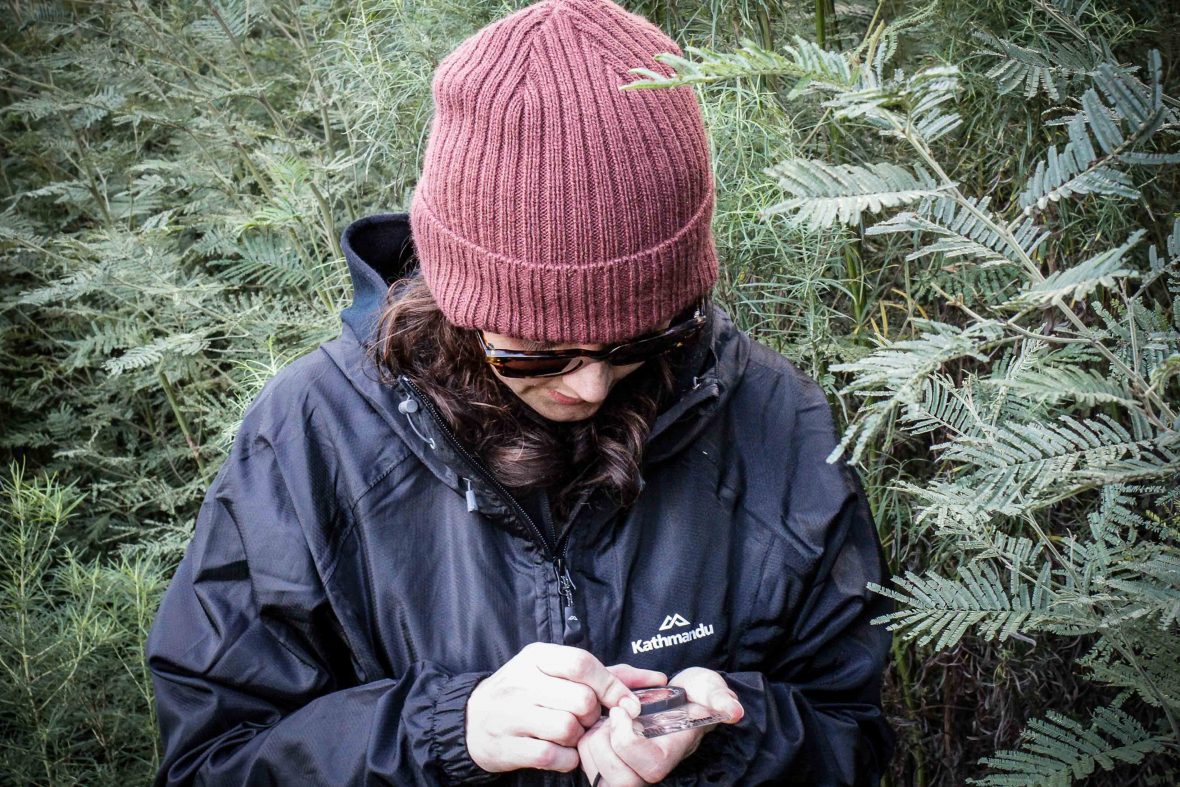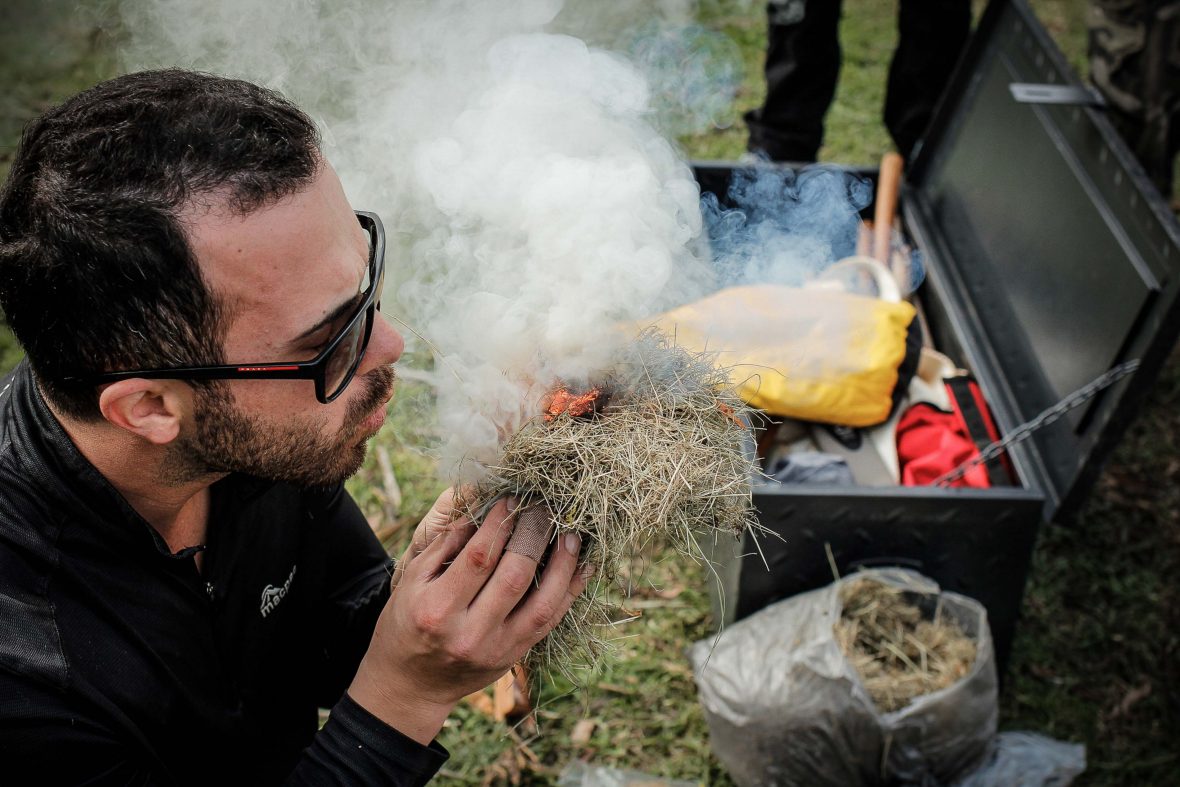
If you’ve ever watched those survival shows on TV and thought, “That looks easy”, you are wrong. Oliver Pelling went on a survival course deep in the Australian bush—and technically died twice.


If you’ve ever watched those survival shows on TV and thought, “That looks easy”, you are wrong. Oliver Pelling went on a survival course deep in the Australian bush—and technically died twice.
Janna is swearing at me. She doesn’t think I’ve been following the coordinates properly. I don’t think I have either. I have led us into the mouth of Peril itself, and Peril is hungry.
I try and focus on my compass. We are deep in a particularly obnoxious part of the Victorian bush, fighting our way through thick and prickly scrubland. It’s cold and sunset is fast approaching, which means we’re nearly in a not-insignificant amount of trouble. To make matters worse, I’m beginning to feel a bit peckish.

Just as we’re about to abandon all hope and accept our fate (death), an opening appears through the trees. It’s actually the same opening Janna, my partner, and I came through to go bushwhacking some 20 minutes ago. You see, we’re not actually lost in the woods—we’re halfway through a wilderness survival course. And we just failed our navigation lesson.
RELATED: The fly fisher on a mission to get more women on the water
Back at camp, we sit around the fire with the rest of the group and take a moment to ponder the reality that, if the navigation lesson was a real survival situation, we’d be dead. Or worse—alive and very hungry.
“It’s not as easy as you think it’s going to be, is it?” says Paul, our instructor for this three-day course. “Trying to stick to a bearing through bush as thick as that is bloody hard.” I shrug. I’m listening, but I’ve also just figured out how to make cheese on toast over an open fire, so I’m a bit preoccupied. I give Janna a slice as a peace offering. She accepts.
Paul, an Englishman originally from Carlisle, informs us that we’ll be heading out after dark to practise night navigation, which will involve trying to stick to our bearings while climbing our way through dense undergrowth in pitch-black, without a torch. With his manicured beard and his Prada sunglasses, Paul doesn’t look like your typical survival instructor. But years of training have turned him into a human Swiss Army Knife. I am more of a human butter knife. The fact that Aboriginal peoples survived out here for over 60,000 years is of little comfort—I have approximately none of their peerless knowledge and skill at my disposal.
You put the spindle in the hole, spin it with the bow, it smokes, the ember pops out, and you establish a fire. If you think it sounds simple, you are profoundly mistaken.
We somehow make it through the night navigation without swearing or dying. The following morning, Paul gathers us all up at Survival Headquarters—a tarpaulin with a table and some chairs under it—and briefs us for the day ahead.

The course, run by Paul and his company, Go Wild, takes everyday schmucks into the bush and teaches them the necessary skills they need to survive a life-or-death wilderness situation. We’re parked up in the middle of Victoria’s stunning Snowy River National Park—a five-hour, nearly-400 kilometer drive from Melbourne—our tents a literal stone’s throw from the immaculate river itself.
Janna and I came on this course because we thought it would be interesting and fun, and it is both of those things. On the course with us are Steve and John, two 4WD enthusiasts who fancied learning some tips in case they ever got caught out, and Hannah, Rachel and Onder, a trio inspired to sharpen their survival skills by the Survivor and Bear Grylls TV shows. And then there’s Paul and Kate, our two survival instructors.
So far, we’ve learned about the psychology of survival (tip one: don’t freak out), how to source water and build shelters, how to signal a plane with a pocket mirror, and how to use a compass and follow a bearing. Today, Paul informs us, we will focus on the skill every single one of us is most excited about: Making fire.
Paul begins our lesson in bush pyrotechnics by showing us a slew of different fire-starting techniques, from using a striker—a portable flint you can buy in most good hiking or camping shops—to rubbing a battery on wire wool and combining a glucose tablet with potassium manganate. Science! Then he pulls out the bowline drill.
Everyone else has made fire; I have made smoke. I give up; Janna does too. If this were a real survival situation, we would be dead. Again.
Paul gives us a demonstration of his bowline drill kit. It goes something like this: You put the spindle in the hole, spin it with the bow, it smokes, the ember pops out, and you use the ember to establish a fire. If you think it sounds simple, you are profoundly mistaken.

He talks us through it all before tasking us with making our own drills and chucking us each a knife. Janna and I gather our wood, cut it into shape, and assemble our drill. It looks good. Our spindle is true and our bow is bow-shaped. I lock the spindle into the baseplate, press firmly down with the handle and begin moving the bow backwards and forwards in an “I really want to make a fire” kind of way. The spindle pops out. No problem—I replace it and try again.
RELATED: Man versus nature in Australia’s far, far north
Half an hour passes. Several of my fingers are numb. An hour passes. I have had to make a new hole in my baseplate because I broke the first one. One and a half hours pass. I have put my back out.
“I can do this,” I tell myself, not knowing if I can actually do this. Two hours pass. Everyone else has made fire; I have made smoke. I am happy for them but I also hate them. I give up; Janna does too. If this were a real survival situation, we would be dead. Again.
Paul reassures us that our technique is on-point. “It’ll be your kit,” he says. “The preparation is key for this—if your kit isn’t quite right, you’ll never get an ember. If you can’t get it going, it’s best to build a completely new drill.”
If you want to avoid potential survival situations in the first place, you’ve got to learn how—and when—to swallow your pride
The very same advice—the importance of preparation— applies to survival in general. One of the main reasons people wind up dead in the wilderness is because they panic and fail to come up with a plan.
“It’s as simple as finding a shady spot, having a drink of water and taking stock of your surroundings and what you have on you,” says Paul. “Then you just need to hatch a plan and stick to it. Making a list of the things you need in order of importance, which varies depending on your situation, can be the difference between life or death. Even just a bit of knowledge can help improve your chances drastically—that’s what I’m hoping to teach people.”

He adds that if you want to avoid potential survival situations, you’ve got to learn how—and when—to swallow your pride. If you think you’re lost or that you might be a bit under-prepared for a particular journey, turn around, retrace your steps and try it again when you have everything you need or a better idea of where you’re going. “If you fail to do that, if you can’t swallow your pride, that’s when you can wind up in a really dangerous situation,” he says.
I don’t know if there’s a moral to this story. But if there is, I suspect it involves not getting lost in the woods with your partner in the first place and, if you are dead-set on getting lost in the woods with your partner, making sure you have some cheese with you.
You can learn how to survive the Australian wilderness too—check out the range of Australian survival courses on offer from Go Wild.
For those in the UK, Survival School offers a similar service, and US-based readers have a range of companies to choose from, including Sigma III Survival School and The Wilderness College.

Oliver is Adventure.com's Editor-in-Chief.


Can't find what you're looking for? Try using these tags: